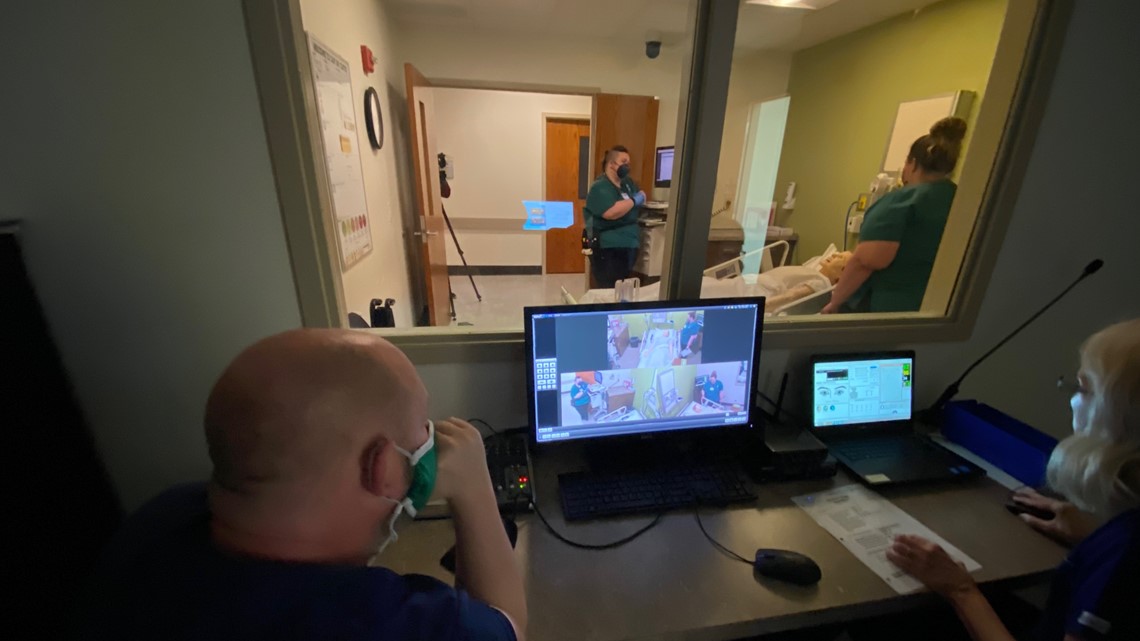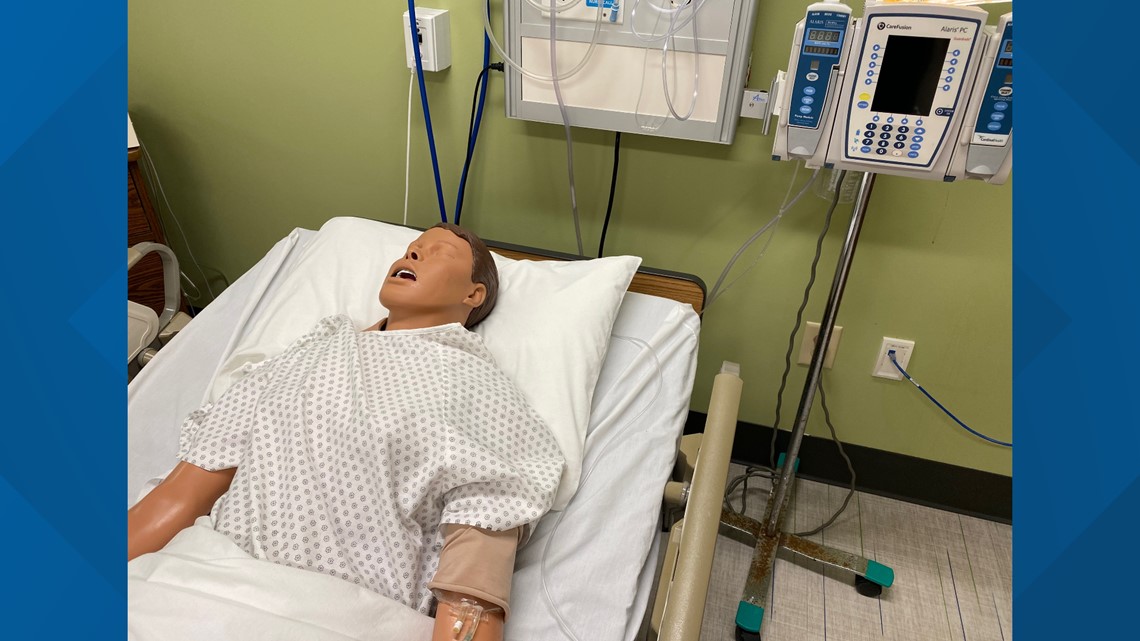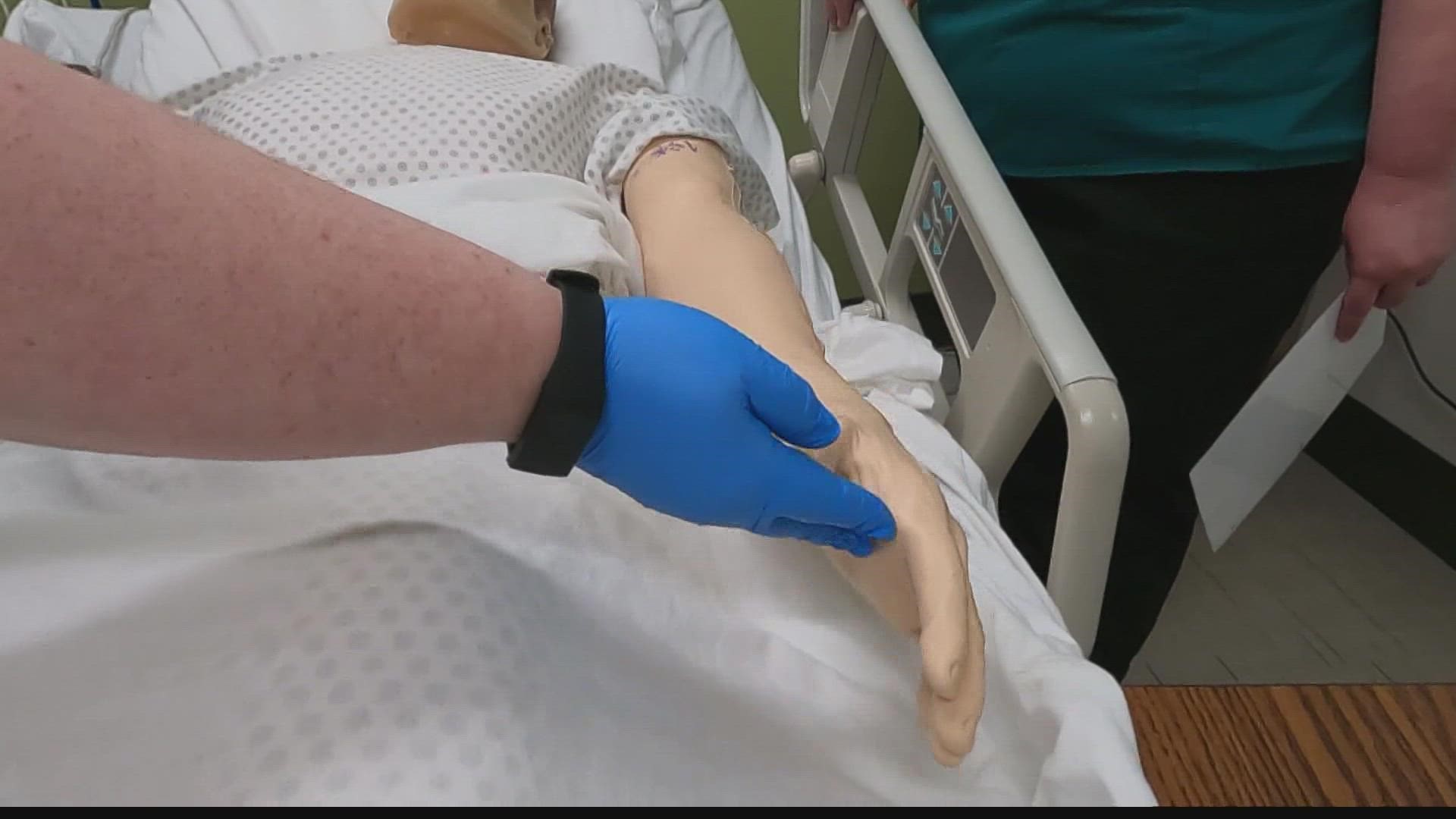INDIANAPOLIS — A new law just signed by Indiana Gov. Eric Holcomb aims to ease the state's critical nursing shortage.
It's estimated we're thousands of nurses short of our health care needs and yet some schools, especially during the pandemic, have had to turn students away because they didn't have clinical placements available.
House Bill 1003 allows for more simulations to replace some of those clinical hours, which would let more students in nursing schools and get more on the job.
But what does simulation training really look like?
13News went to Ivy Tech to find out.
Nursing student Reba Chapple isn't in a hospital with a human patient, but what we watched is a real-time scenario teaching and testing her skills.
"We're trying to make it as real as we possibly can," Chapple said.
There's a mannequin "victim" with a voice, being provided by an instructor on the other side of a two-way mirror.


There are family members in the room, played by fellow nursing students.
And then there is a diagnosis, treatment and a few curveballs for Chapple, which all depend on her medical decisions in the moment.
"You saw the student being the nurse. In there, Reba was all by herself. In a hospital facility, they're never the actual nurse. Staff would take over," explained Linda Fluharty, Ivy Tech faculty member, RN and simulation coordinator. "In this case, she had to decide, 'Oh, I've got this order. Should I give it or not?'"
"You never know what you're walking into for sim lab," Chapple said. "It could go 18 million different directions, just like in a real patient room with a real patient. When you're in here, it is a fishbowl. Literally. They are watching every move I make."


Simulations like this one at Ivy Tech's Lawrence campus are about to become more common.
HB 1003, just signed into law this month by Gov. Holcomb, allows nursing schools with high pass rates to replace some clinical hours with simulation hours, using role-play, technology and mannequins.


Students can get up to half of their training in sim labs, the other half in hospitals.
"Right now we have difficulty getting clinical sites for what we need," Fluharty said, "so if we can increase our simulation up to 50% when needed, that will greatly help us move our students through our program."
That's the goal, especially after the pandemic.
COVID-19 made a nursing shortage that already existed in Indiana much worse.
So relaxed education requirements will get more people into the pipeline and onto the job.
"I definitely prefer being in a hospital with patients," Chapple said. "At the height of the pandemic, we couldn't get into hospitals."
Now, they'll still get hands-on experience, just more of it here in sim lab, with real-time feedback on every case.
"They go in their debriefing room and that's so important," Fluharty said. "''What went well? What didn't go well? What would we change next time and why?'"

